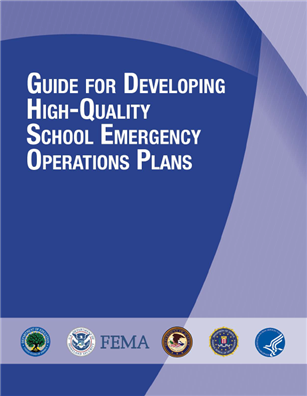Guide for Developing High-Quality School Emergency Operations Plans
Lessons learned from school emergencies highlight the importance of preparing school officials and first responders to implement emergency operations plans. By having plans in place to keep students and staff safe, schools play a key role in taking preventative and protective measures to stop an emergency from occurring or reduce the impact of an incident. Although schools are not traditional response organizations, when a school-based emergency occurs, school personnel respond immediately. They provide first aid, notify response partners, and provide instructions before first responders arrive. They also work with their community partners, i.e., governmental organizations that have a responsibility in the school emergency operations plan to provide a cohesive, coordinated response. Families and communities expect schools to keep their children and youths safe from threats (human-caused emergencies such as crime and violence) and hazards (natural disasters, disease outbreaks, and accidents). In collaboration with their local government and community partners, schools can take steps to plan for these potential emergencies through the creation of a school Emergency Operations Plan (school EOP). This document is intended to serve as a guide for the planning teams responsible for developing and revising school EOPs . It is recommended that districts and individual schools compare existing plans and processes against the content and processes outlined in this guide. To gain the most from it, users should read through the entire document prior to initiating their planning efforts and then refer back to it throughout the planning process.
Author: U.S. Departments of: Education, Health and Human Services, Homeland Security, Justice, and the FBI, FEMA
Federal Sponsor Agency: Department of Education, DOJ
Publication Date: 2013
Publication Type: PDF
